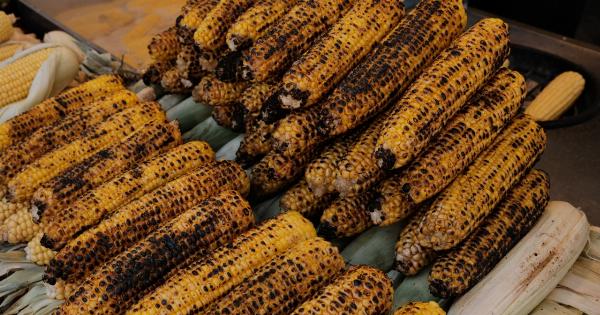Have you ever noticed the taste of your food changing when it gets burnt? Burnt food may not just be unappetizing, but it also poses a risk to your health.
When food is burned or cooked for prolonged periods at high temperatures, it results in the formation of a chemical known as acrylamide. Acrylamide can have detrimental effects on your health if consumed in high quantities. In this article, we delve into the effects of acrylamide and ways to reduce its formation in our food.
What is Acrylamide?
Acrylamide is a chemical that forms when sugars and an amino acid react in the presence of heat. It is commonly found in starchy foods such as potatoes, bread, and cereals that are cooked at high temperatures.
Acrylamide is also present in coffee beans, although it is not as harmful as in other foods.
The Effects of Acrylamide on Health
Acrylamide has been labeled as a probable human carcinogen, meaning that it can cause cancer in high doses. Animal studies have shown that the chemical is linked to the development of tumors.
Consuming foods that contain high levels of acrylamide on a regular basis may increase the risk of cancer, particularly in the kidneys, prostate, and uterus.
Acrylamide can also cause damage to the nervous system. Workers in factories that produce acrylamide have shown signs of nerve damage, and prolonged exposure can lead to a deterioration of the central nervous system.
How to Reduce the Formation of Acrylamide in Food
The formation of acrylamide can be reduced by implementing the following measures:.
1. Cooking at Lower Temperatures
Acrylamide is produced when food is cooked at high temperatures. To minimize the formation of acrylamide, cook your food at lower temperatures. Baking, roasting, and frying at high temperatures should be avoided.
2. Soaking and Blanching
Soaking and blanching food before cooking can also reduce the formation of acrylamide. Soaking potatoes in cold water for 30 mins before frying them can reduce the acrylamide level by up to 23%.
Blanching vegetables in boiling water for a few minutes before cooking can also help reduce acrylamide formation.
3. Using Alternative Cooking Methods
Alternative cooking methods such as steaming, boiling, and microwaving do not produce acrylamide. These methods should be used in place of frying, baking, and roasting at high temperatures to reduce the formation of acrylamide.
4. Choosing the Right Food
The formation of acrylamide varies depending on the type of food. Fried potatoes and processed foods such as potato chips and crisps tend to have higher levels of acrylamide.
Choosing whole foods such as fresh vegetables, fruits, and lean meats can help reduce the amount of acrylamide in your diet.
Conclusion
Acrylamide is a harmful chemical that forms when food is cooked at high temperatures. Consuming foods containing high levels of acrylamide may increase the risk of cancer and nerve damage.
By cooking food at lower temperatures, soaking and blanching, and choosing alternative cooking methods, you can reduce the formation of acrylamide in your food and protect your health.






























